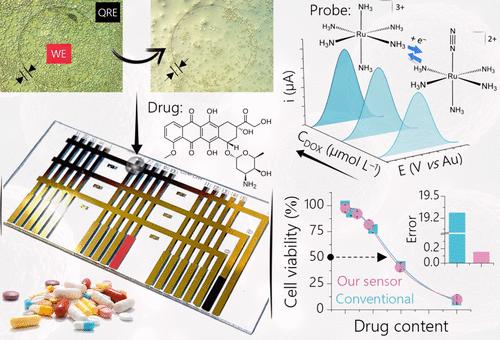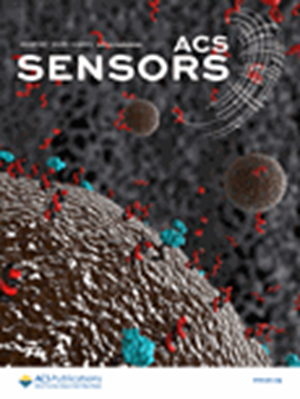Ultradense Electrochemical Chip and Machine Learning for High-Throughput, Accurate Anticancer Drug Screening
IF 9.1
1区 化学
Q1 CHEMISTRY, ANALYTICAL
引用次数: 0
Abstract
Despite the potentialities of electrochemical sensors, these devices still encounter challenges in devising high-throughput and accurate drug susceptibility testing. The lack of platforms for providing these analyses over the preclinical trials of drug candidates remains a significant barrier to developing medicines. In this way, ultradense electrochemical chips are combined with machine learning (ML) to enable high-throughput, user-friendly, and accurate determination of the viability of 2D tumor cells (breast and colorectal) aiming at drug susceptibility assays. The effect of doxorubicin (anticancer drug model) was assessed through cell detachment electrochemical assays by interrogating Ru(NH3)63+ with square wave voltammetry (SWV). This positive probe is presumed to imply sensitive monitoring of the on-sensor cellular death because of its electrostatic preconcentration in the so-called nanogap zone between the electrode surface and adherent cells. High-throughput assays were obtained by merging fast individual SWV measurements (9 s) with the ability of chips to yield analyses of Ru(NH3)63+ in series. The approach’s applicability was demonstrated across two analysis formats, drop-casting and microfluidic assays. One should also mention that fitting a multivariate descriptor from selected input data via ML proved to be essential to providing accurate determinations (98 to 104%) of cell viability and half-maximal lethal concentration of the drug. The achieved results underscore the potential of the method in steering electrochemical sensors toward enabling high-throughput drug screening in practical applications.

用于高通量、精确抗癌药物筛选的超密集电化学芯片和机器学习
尽管电化学传感器具有很大的潜力,但这些设备在设计高通量和准确的药敏检测方面仍然面临挑战。缺乏对候选药物临床前试验提供这些分析的平台仍然是开发药物的一个重大障碍。通过这种方式,超密集电化学芯片与机器学习(ML)相结合,能够高通量、用户友好、准确地测定二维肿瘤细胞(乳腺和结直肠)的活力,旨在进行药物敏感性分析。采用方波伏安法(SWV)对Ru(NH3)63+进行细胞分离电化学分析,评价阿霉素(抗癌药物模型)的作用。由于电极表面和贴壁细胞之间的所谓纳米间隙区存在静电预集中,这种阳性探针被认为意味着对传感器上细胞死亡的敏感监测。通过将快速单个SWV测量(9 s)与芯片串联分析Ru(NH3)63+的能力相结合,获得了高通量分析。该方法的适用性证明了两种分析格式,滴铸和微流控分析。还应该提到的是,通过ML从选定的输入数据拟合多变量描述符,对于提供准确的细胞活力测定(98至104%)和药物的半最大致死浓度至关重要。所取得的结果强调了该方法在指导电化学传感器在实际应用中实现高通量药物筛选方面的潜力。
本文章由计算机程序翻译,如有差异,请以英文原文为准。
求助全文
约1分钟内获得全文
求助全文
来源期刊

ACS Sensors
Chemical Engineering-Bioengineering
CiteScore
14.50
自引率
3.40%
发文量
372
期刊介绍:
ACS Sensors is a peer-reviewed research journal that focuses on the dissemination of new and original knowledge in the field of sensor science, particularly those that selectively sense chemical or biological species or processes. The journal covers a broad range of topics, including but not limited to biosensors, chemical sensors, gas sensors, intracellular sensors, single molecule sensors, cell chips, and microfluidic devices. It aims to publish articles that address conceptual advances in sensing technology applicable to various types of analytes or application papers that report on the use of existing sensing concepts in new ways or for new analytes.
 求助内容:
求助内容: 应助结果提醒方式:
应助结果提醒方式:


